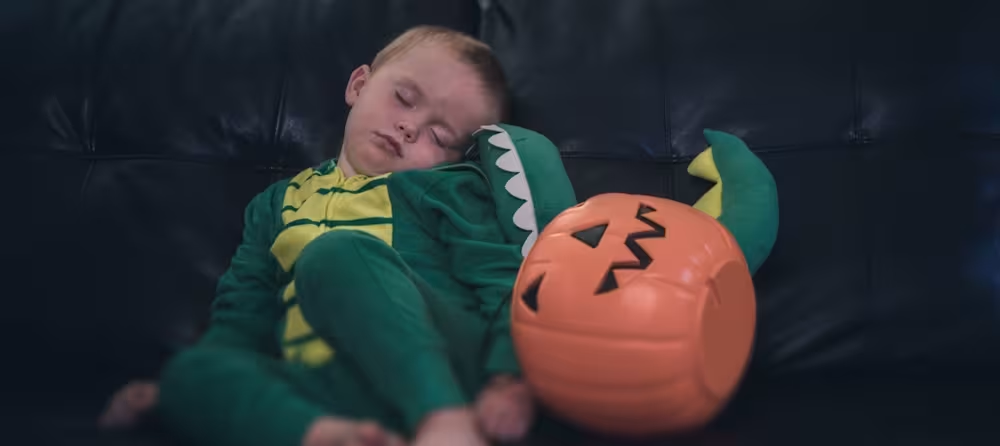Spring forward 2025: Adjust baby sleep schedule
Updated Oct 16, 2025

Are you ready for more sunlight? And perhaps more importantly — is your baby?
Daylight saving time (DST) starts Sunday, March 9th at 2:00 AM in most of the United States, and on Sunday, March 30th for most of Europe. With the right preparation, you and your kiddos can smoothly sail through the time change, and even use the start of DST to your advantage if you have an early riser.
Why does the time change affect a baby's sleep?
Our circadian rhythm, or internal clock, is governed by light exposure. For children used to waking around the same time each day, the light they see during awake times “sets” their body clock. As a result, changing the time on your physical clocks won’t automatically change a child’s internal clock; it will take some time for the circadian rhythm to shift.
How can you maintain your baby’s current sleep schedule?

First, let’s discuss what to do if you like your current bedtime and want to keep it after the time change forward. We recommend planning in advance so you’ll have your typical schedule on Monday, March 10th.
A few days before the time change, you can start shifting your child’s entire schedule earlier. This will help ensure that they aren’t going to bed too late on the night of the time change and/or they don’t lose an entire hour on Monday morning, which can lead to overtiredness and sleep issues. Here’s what to do:
Thursday, March 6th:
Wake your child up 15 minutes earlier than normal in the morning. Open the curtains and turn on the lights to make sure they get sufficient light exposure. Offer all meals and sleep periods (naps and bedtime) 15 minutes earlier as well. This help keeps all schedule times in sync and slowly moves the child’s internal clock.
Example: A child normally wakes at 7:00 AM, has naps at 10:00 AM and 2:00 PM, and goes to bed at 7:00 PM. On day 1 of the schedule shift, you’d wake your child up at 6:45 AM. Offer naps at 9:45 AM and 1:45 PM, and have bedtime at 6:45 PM.
Friday, March 7th:
Wake your child up 15 minutes earlier than the day before (30 minutes earlier than their normal morning wake-up time). Continue to offer all meals and sleep periods 15 minutes earlier than the day before.
Example: Wake at 6:30 AM, offer naps at 9:30 AM and 1:30 PM, and have bedtime at 6:30 PM
Saturday, March 8th:
Once again, wake your child up 15 minutes earlier than the day before (45 minutes earlier than their normal morning wake-up time). Continue to offer all meals and sleep periods 15 minutes earlier than the day before.
Example: Wake at 6:15 AM, offer naps at 9:15 AM and 1:15 PM, and have bedtime at 6:15 PM
Sunday, March 9th:
This is the day the clocks “spring forward.” This morning, wake your child up at their typical wake time according to the clock.
Example: Wake at 7:00 AM. (This will feel like 6:00 AM to them.) Offer naps at 10:00 AM and 2:00 PM and bedtime at 7:00 PM. Return to your normal scheduling for meals.
Monday, March 10th and beyond:
Continue to offer naps and bedtime at your “normal” times. Keep in mind that it can take up to a week to fully adjust to the time change.
Example: Wake at 7:00 AM, naps at 10:00 AM and 2:00 PM, and bedtime at 7:00 PM.
Try not to freak out if the morning wake time is a bit earlier than usual, or if there are some additional night wakings at first. A child’s circadian rhythm needs some time to adjust, just as it would with jetlag. Keep the room dark until wake-up time and dim the lights when you begin their bedtime routine.
By planning ahead, the adjustment should go as smoothly as possible, and you should see the most minimal impact on your child’s sleep.
How can you adjust an early rising schedule?

In other cases, you may want a later bedtime. When a child is getting enough sleep, but their entire schedule is just shifted too early (e.g., a baby who’s getting 11 - 12 hours of sleep at night, but waking before 6:00 AM), you can use spring DST to help you.
The springtime change can automatically propel your baby’s sleep schedule forward. Here, our aim will be to keep everything in sync after the time change. Note that this method won’t be a good fit for families who aren’t able to shift sleep times due to outside constraints (like set nap times at daycare).
Saturday, March 8th:
Offer all meal and sleep times as you normally do.
Example: A child typically wakes at 5:30 AM, naps at 8:30 AM and 1:00 PM, and goes to bed at 6:00 PM. Maintain this schedule.
Sunday, March 9th:
After the time change, your child’s schedule is magically transformed and everything is automatically an hour later. The trick is maintaining it. Exposure to light and the timing of meals will be key.
Be sure to keep your child in their darkened room until one hour (according to the clock) after their normal waking time. While the time on the clock will be one hour later, the time will feel exactly the same to them.
Offer meals, naps, and bedtime an hour later as well. Again, it won’t feel like an hour later to them. It will feel the same. Be sure to expose your child to bright lights in the evening before it’s time to get ready for bed.
Example:
Keep the room dark until 6:30 AM. It will feel like 5:30 AM — their typical waking time.
Offer naps at 9:30 AM and 2:00 PM.
Offer all meals an hour later in order to keep the entire schedule in sync.
Expose to bright lights in the evening if possible.
Bedtime at 7:00 PM.
Editor's note
These tips work best for children 6 months or older who already have a regular schedule in place. If your child is younger than 6 months old, you might have to go slower and adjust every 2 days or so. On the other hand, if you have an older toddler or preschooler, they can often handle 30 minute adjustments, rather than the recommended 15 minute adjustments.

Tricky cases: You might require a personalized strategy
Once you’re a parent, you quickly find out that daylight saving time is no longer about simply losing (or gaining) an extra hour of sleep. Instead, it can have a much bigger impact on your family.
These tips are all well and good if your child is already getting enough sleep. But what if your child isn’t already well-rested? In that case, you might require a more customized strategy.
Takeaway
The time change affects sleep because our circadian rhythm is governed by light exposure. For children used to waking around the same time each day, changing the time on the clock won't automatically change their internal clock. Instead, it will take some time for them to adjust.
In order to best prepare for the spring time change, consider shifting your child's schedule a little earlier in the days leading up to daylight saving time. This typically works best for children 6 months and older who have a regular schedule in place. If your child is younger than 6 months, you may need to make smaller, slower adjustments every few days.
It's great to plan ahead and attempt to minimize disrupting your child's sleep schedule. However, research shows it may take about a week to adjust to the time change.
The spring forward time change may also help correct a child's early rising schedule if they're getting enough sleep but their entire schedule is just shifted too early.
FAQ: Adjusting baby sleep for spring daylight saving time change
Share article:
Note: The content on this site is for informational purposes only and should not replace medical advice from your doctor, pediatrician, or medical professional. If you have questions or concerns, you should contact a medical professional.
Share article:








